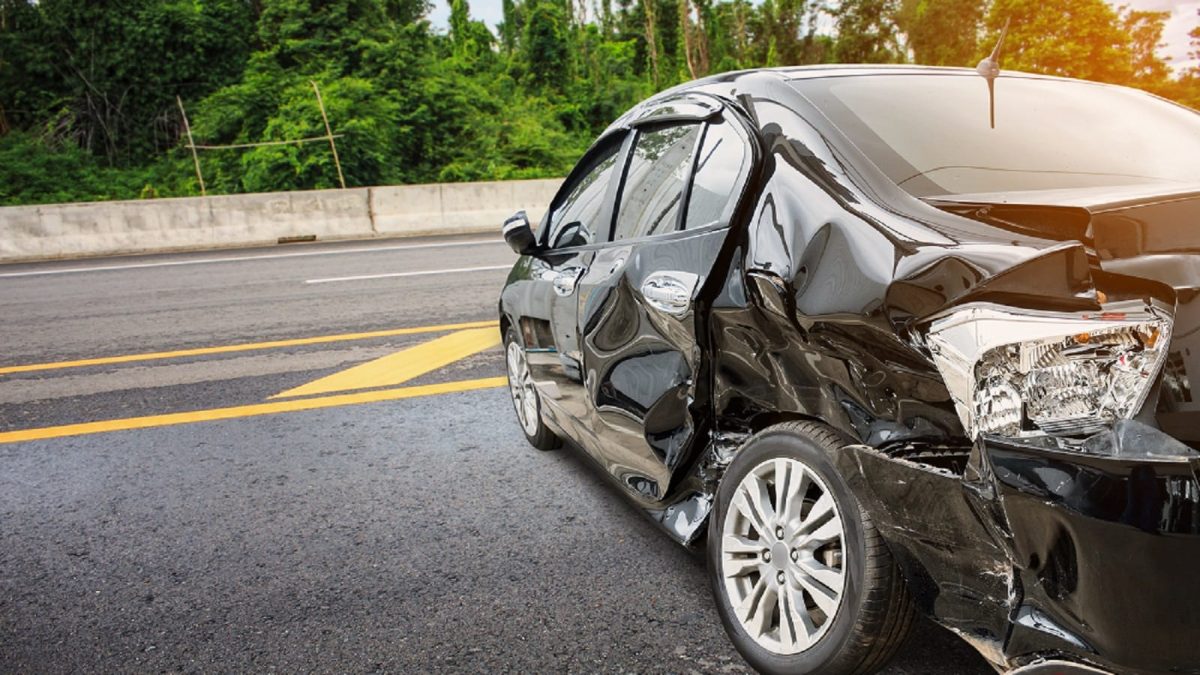Vehicle defects can cause injuries and death in two ways. Some defects make a vehicle more likely to crash. Other defects do not affect a vehicle’s likelihood to crash, but cause injuries, or fail to protect occupants from injuries when an accident occurs.
Defects That Cause a Vehicle to Crash
Defects that cause accidents affect the safe operation of the vehicle. These defects are often undetectable to the naked eye, and the defective parts may operate normally for some time and then, suddenly fail. Faulty parts and design flaws are both vehicle defects.
Faulty marketing, manuals, safety warnings, and instructions can also fall under this category. Defective RV tires are the result of this type of error: They are designed and tested for use in smaller vehicles and cannot handle the weight of an RV.
Other common vehicle defects which can cause a crash include:
- Defective airbags
- Spontaneous acceleration
- Faulty brake systems
- Faulty steering systems
- Defective seatbelts
- Defective tires
- Inappropriate pairing of U-Haul trailers with SUVs
- Design defects in SUVs and 15-passenger vans causing them to rollover
- Defective car seats
Defects That Increase the Risk of Serious Injury
Some defects do not make a vehicle more likely to crash, but either fail to protect occupants from injury during a crash or cause injuries that would otherwise not have occurred. A vehicle’s ability to protect occupants in the event of an accident is called crashworthiness.
Faulty safety devices at best fail to provide protection, and at worst cause injuries or death in accidents that otherwise would have caused minor injuries or no injuries at all. Faulty air bags can actually cause an accident by going off at inappropriate times.
Weak SUV roofs can allow roof crush during a rollover accident, causing avoidable catastrophic injuries and death.
Fuel system defects, including leaks and poorly placed gas tanks, can lead to fuel-fed fires and explosions.
Faulty door latches allow doors to fly open during a crash ejecting occupants, or can allow doors to come open during normal operation of the vehicle.
Defective Airbags
Airbags are designed to work in conjunction with seatbelts to provide protection from impact during a car accident. They rely on sensors to detect an impact and tell them to deploy. Ideally, they only deploy when there is a crash.
How Airbags Work
When airbags are functioning properly, sensors detect an impact, signaling the airbag to deploy. It deploys by falling rapidly with air and bursting into the vehicle at a speed of 200 miles an hour. Then it immediately deflates. The airbag must deploy fast enough to inflate completely between the moment of the initial impact, and the time that occupants would otherwise impact the interior of the vehicle.
Airbag Defects
Airbags can cause injuries in many ways. Common problems with airbags include:
- Failure to deploy during a crash
- Deployment when there is no crash
- Deploying with too much force
- Improperly filtered airbag gases
When airbags fail to deploy, they simply fail to provide protection. Sensor defects can cause an airbag to deploy if you hit a very small bump in the road, and actually cause you to have an accident. Airbags are particularly dangerous to children and small adults.
Airbag Injuries
Defective airbags can cause severe injuries or death, and can even be the cause of auto accidents. Injuries caused by airbags include:
- Eye and eye socket injuries
- Brain injury
- Whiplash
- Neck injuries
- Broken arms and wrists
- Death
Improperly filtered airbags gases can cause severe chemical burns and inhalation of toxic chemicals.
The dangers of airbags have been known to manufacturers for many years, yet they continue to make and install these so-called safety devices with serious defects.
Defective Takata Airbags
Airbags are designed to protect us from injury when we are involved in an accident. Sadly, when airbags are defective, they often do more harm than good. Failure to deploy or deployment with too much force are two of the leading causes of airbag injuries. In the case of Takata airbags, excessive deployment force scatters shrapnel throughout the cab, posing potentially fatal danger to everyone in the vehicle.
Being injured by poorly designed or manufactured airbags entitles you to compensation from the companies behind the products. Our Mobile defective airbag attorneys are here to stand by your side and fight for your rights, to help ensure you are fully compensated for all of your damages.
The Scope of the Problem
The Takata airbag recall is the largest of its kind ever issued by the NHTSA. What’s more, problems with the Takata airbag have prompted the NHTSA to, for the first time in its history, recall vehicles proactively. This step was taken after an independent investigation found a missing chemical in a majority of Takata airbags that allowed moisture to accumulate, increasing risks of shrapnel being expelled upon deployment.
The recall currently includes nearly 70 million vehicles, though that number may increase with time.
A shocking number of vehicles from a near complete range of manufacturers are included in the Takata airbag recall. The NHTSA maintains a frequently updated Takata airbag recall page that lists each impacted manufacturer and links to the models included in the recall. It is a good idea to check this page to make sure your vehicle is not involved. If it is, repairs will be provided free of charge at your closest dealership. Take advantage of these free repairs as soon as possible.
Of course, those injured by Takata will find pages listing recalled vehicles of little use. If you are among those injured by a defective Takata airbag, our product liability attorneys can help you get justice.
Defective Seatbelts
The most important safety feature in any car is the seatbelt. The purpose of the seatbelt is to restrain us and prevent us from suffering serious injuries during an auto accident. Unfortunately, if a seatbelt is defective, it can make a normally survivable auto accident a deadly, or painful occurrence.
During an auto accident, there are two collisions. The first collision is when the automobile hits another object or car. The second collision is where the seatbelt comes into play. During the second collision, the occupants of the vehicle collide with the interior.
The purpose of the seatbelt is to prevent you from being injured during the second collision. If a seatbelt is defective, it can prevent you from being adequately restrained during an auto accident, even if you have buckled in. Some of the most common seatbelt defects include:
- Seatbelts mounted on doors can become unmounted. These types of seatbelts have many different risks associated with them, including serious spinal injuries if the occupant fails to buckle the waist strap and is ejected from the car.
- Seatbelts can unlatch during an accident or rollover. While auto manufacturers deny that seatbelts can unlatch during an auto accident, recent studies have shown that the forces of an auto accident can cause the seatbelt button to depress, unlatching the seatbelt.
- Lap belts can cause additional internal injuries. Some cars are made with only lap belts, leaving your upper body vulnerable to catastrophic injuries from colliding with the windshield, steering wheel, or dashboard.
- Shoulder retractors failing. The device within the shoulder restraints on some seatbelts can be defective, allowing too much slack, and preventing proper restrain during a collision.
Seatbelts are the most essential safety feature of any automobile, and if they are defective, it can result in catastrophic injury, or death. After any accident you should be aware of some of the telltale signs that a seatbelt may have been defective.
- If an occupant makes contact with the windshield, it may indicate that the retractor is defective
- If an occupant is found unrestrained, but they or another passenger insists they were buckled in
Seatbelt defects are difficult to discover, and even more difficult to litigate.
Defective SUV Roofs
Sports utility vehicles (SUVs) are, by design, prone to rollover. While SUV rollover accidents account for a small number of all motor vehicle accidents, they make up a large portion of fatal accidents. One reason that rollovers are so deadly is roof crush. Believe it or not, roof crush could be prevented if manufacturers made SUVs with the same roof strength as other vehicles.
SUV Roof Defects
Most SUVs do not have roll bars, and they actually have hollow roof pillars, causing them to have very poor roof crush resistance.
When SUVs first went on the market they were primarily off-road vehicles. Off-road conditions make rollovers a common occurrence, so they were equipped with roll bars. Today’s SUVs are sold primarily for street driving, so the roll bar is no longer standard equipment, even though they are still very likely to roll. Consumers who want the protection must request it, and pay extra.
Roof Crush Resistance and the Law
Federal Motor Vehicle Safety Standards require that the roof support or pillar on a passenger car must be strong enough to support one and a half times the weight of the vehicle. If the vehicle comes to rest on its roof, it should deform no more than five inches, making roof crush unlikely.
Even though SUVs are far more likely to roll, and therefore more likely to land on their roofs, they are not held to this standard. SUV roofs do not even have to be strong enough to support the full weight of the vehicle. They are only required to withstand 5/6 of the vehicle’s weight, meaning that they are very likely to crush when the vehicle rolls.
How Defective SUV Roofs Cause Injuries
When the roof is crushed, it protrudes into the occupant compartment causing injuries to the spinal cord, head, and neck. Compression forces to an occupant’s upright head can cause a bursting fracture in the C5 to C7 vertebrae of the cervical spine.
Roof crush can cause seatbelt failure, leading to a “diving” injury. Slack is created in the seatbelt allowing the passenger to gain momentum before striking the roof. Diving injuries cause a fracture of vertebrae, which then press on the spinal cord.
Bursting of the windshield or windows can cause passengers to be ejected from a vehicle.
If you or a loved one has been injured in an auto accident in Mobile or anywhere in Alabama, and you believe the accident was the result of a defective vehicle, please contact one of our experienced defective product lawyers. We’ll evaluate your claim for free, and if you do have a defective vehicle claim, we’ll help you get the compensation you deserve. Call (251) 432-2277 or complete the form on this page to get started.



